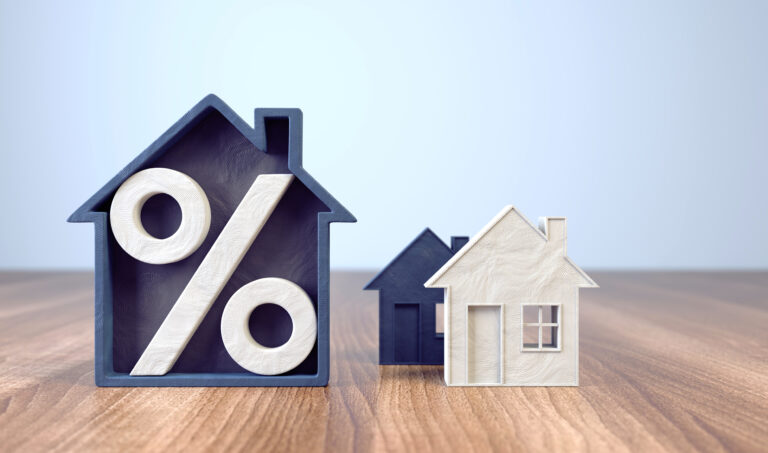
More Rate Cuts In The Near Future?
The Bank of Canada (BoC) implemented its third consecutive interest rate cut on Wednesday, as it aims to strike a balance between controlling inflation
To determine ‘affordability,’ you will first need to know your taxable income and the amount of any outstanding debt. Assuming it is your principal residence you are purchasing, calculate 35% of your income for use toward a mortgage payment, property taxes and heating costs. If applicable, add half of the estimated monthly condominium maintenance fees in this calculation.
Second, calculate 42% of your taxable income and deduct all of your monthly debt payments, including car loans, credit cards, lines of credit payments. The lesser of the first or second calculation is used for housing-related payments, including your mortgage payment. These calculations are based on lender guidelines.
In addition to considering what you can afford, make sure you calculate how much you think you can afford. If the payment amount you are comfortable with is less than 32% of your income, you may want to settle for the lower amount rather than stretch yourself financially.
A pre-approved mortgage provides an interest rate guarantee from a lender for a specified period (usually up to 120 days) and a set amount of money.
The pre-approval is calculated based on information provided by you and is subject to conditions before the mortgage is finalized. Conditions would usually be things like ‘written employment and income confirmation’ and ‘down payment from your own resources,’
A pre-approved mortgage is one of the first steps a home buyer should take before beginning the buying process.
The down payment is that portion of the purchase price you provide yourself.
The down payment (which represents your financial stake, or the equity in your new home) should be determined well before you start house hunting.
The larger the down payment, the less your home costs in the long run. With a smaller mortgage, interest costs will be lower, and over time this will add up to significant savings.
The minimum down payment is 5% of the purchase price, subject to certain price restrictions for homes purchased above $500,000 and 1 million.
Purchase Prices ranging from:
*As of December 15, 2024. First-Time Homebuyers and purchases of newly built homes, have an increase in the purchase price cap as follows:
In addition to the down payment, are closing costs (i.e. legal fees and disbursements, appraisal fees and a survey certificate, when applicable).
Most lenders will accept a gifted down payment from and immediate family member. A gift letter signed by the donor is usually required to confirm that the funds are a gift and not a loan.
If you’re a first-time homebuyer, the federal government offers programs to assist you, including the Home Buyers’ Plan (HBP). This program lets you withdraw up to $60,000 from your RRSP savings ($120,000 for a couple) to fund your first down payment. You’ll then have 15 years to repay the withdrawn amount.
Already saved for your down payment? Using the Home Buyers’ Plan could still be a smart financial move—if you have sufficient RRSP contribution room. Contributing to your RRSP for this purpose may allow you to claim a tax deduction, which you can use to repay your RRSP withdrawal or cover other home-related costs.
Our knowledgeable and approachable brokers can guide you through the details of this program and other government offerings. You can also consult with your financial advisor to fully understand the benefits and implications of the HBP. Along with down payment advice, we’ll help you secure the best rate and mortgage option tailored to your needs.
When buying a home or property, there are several costs to plan for. Here’s a quick overview:
Being aware of these expenses will help you better prepare for your home purchase.
The length of mortgage terms varies widely – from 6 months right up to 10 years.
5-year terms are the most competitive on interest rates and are what most home buyers typically choose. You may consider a short-term mortgage if you have a higher tolerance for risk, if you have time to watch rates or are not prepared to make a long-term commitment.
Yes, a home inspection is essential. It is a visual assessment of a property’s overall condition, conducted by a professional home inspector.
During the inspection, the inspector evaluates key components, including the roof, ceilings, walls, floors, foundation, crawl spaces, attic, and retaining walls, as well as systems such as electrical, heating, plumbing, drainage, and exterior weatherproofing. The findings are typically detailed in a written report provided to the buyer within 24 hours.
A pre-purchase home inspection safeguards your investment by identifying minor and major issues, including potential structural repairs, which can influence your decision.
Additionally, it offers peace of mind and helps you plan for future maintenance or repairs. By addressing unknowns, a home inspection enhances the likelihood of a successful and informed purchase.
Depending on the circumstances surrounding your bankruptcy, generally, some lenders would consider providing mortgage financing.
Where you pay child support and alimony to another person, generally, the amount paid out is deducted from your total income before determining the size of mortgage you will qualify.
Where you receive child support and alimony from another person, generally, the amount paid may be added to your total income before determining the size of mortgage you will qualify for, provided proof of regular receipt is available for a period of time determined by the lender.
Also know as ‘Default Insurance’ and ‘CMHC Insurance’.
Mortgage default insurance is mandatory for mortgages with a Loan-to-Value (LTV) ratio exceeding 80%, commonly referred to as high-ratio mortgages. In other words, when the borrower puts less than 20% down when purchasing. This insurance protects lenders from potential losses due to borrower default or foreclosure.
The borrower typically covers the premium, which ranges from 0.50% to 7.0%. Premiums can either be added to the mortgage amount or paid upfront as a lump sum before the mortgage is issued. It’s important to note that mortgage default insurance is distinct from mortgage life insurance.
In Canada, this insurance is provided by three organizations: Canada Mortgage and Housing Corporation (CMHC), Sagen, and Canada Guaranty. CMHC operates as a Crown corporation, while the other two are approved private entities.
A conventional mortgage is where the down payment is equal to 20% or more of the purchase price, a loan to value of or less than 80%, and does not normally require mortgage loan insurance.
The interest rate on a fixed-rate mortgage is set for a pre-determined term. This offers the security of knowing what you will be paying for the term selected.
A mortgage in which payments may fluctuate depending on market conditions. If interest rates go down, more of the payment goes towards reducing the principal; if rates go up, a larger portion of the payment goes towards covering the interest.
Paying off your mortgage faster can result in substantial savings on interest and help you build equity in your property more quickly. Choosing the right mortgage product from the beginning is essential to ensure you have the flexibility to meet your financial goals.
To accelerate your mortgage payoff, consider the following options, depending on your lender and the terms of your mortgage:
These strategies can help you reduce your mortgage faster and save money in the long run.
You can begin your mortgage renewal process as early as 120 days (4 months) before your current term ends, even if you haven’t yet received your renewal offer. By law, lenders must provide your renewal statement at least 21 days before the term’s maturity date. Starting early gives you ample time to negotiate or explore better rates and terms.
When you receive your lender’s renewal offer—or request one—it may include a rate guarantee for the remaining time before your deadline. If interest rates drop before your mortgage matures, your lender might adjust the offered rate downward.
However, the initial renewal rate from your lender is often not the best available. These offers are typically based on posted rates with a “discount” to make the deal seem appealing. Use this opportunity to shop around or negotiate for a better interest rate, whether with your current lender or a new one. A better deal could save you significant money over your next term.
Before signing anything, consult with us. We can handle the research, guide you through the process, and ensure you secure the best rate and mortgage option for your needs—giving you peace of mind and confidence in your decision.

The Bank of Canada (BoC) implemented its third consecutive interest rate cut on Wednesday, as it aims to strike a balance between controlling inflation

People hoping for more interest rate cuts from the Bank of Canada have been getting some good news.

In 2024, approximately 2.2 million mortgages in Canada are up for mortgage renewal, representing over 45% of all outstanding mortgages, as per data from